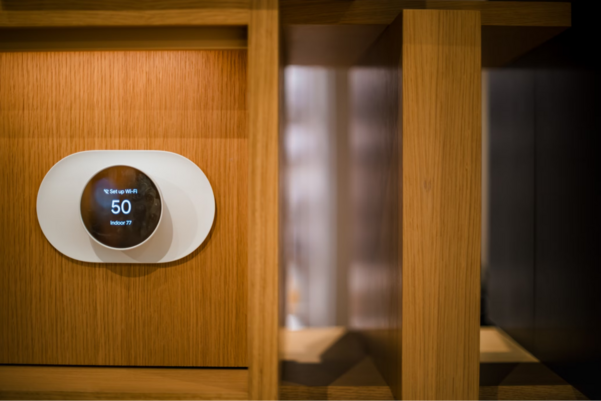
Smart home integration is no longer limited to high-end developments or early tech adopters. As technology becomes more accessible and expectations shift, connected systems are increasingly seen as a valuable feature. Homeowners and prospective buyers alike now prioritise properties that offer convenience, energy savings, and future-ready features.
Understanding Home Automation
Home automation refers to the centralised control of domestic systems such as lighting, heating, security, and audio-visual equipment. These systems work together through connected software and devices, offering a seamless and more responsive home environment.
The key benefits include greater convenience, improved energy efficiency, enhanced security, and the ability to personalise settings. For example, automation allows for routines such as lights switching on when you enter a room or the thermostat adjusting before your arrival. These features can be controlled via apps or through voice assistants like Amazon Alexa, Google Assistant, or Siri on Apple devices, allowing for hands-free operation and quick adjustments throughout the day.
Savant systems take this a step further, automating everything from lighting and music to video distribution and climate control. Their energy management features enable precise monitoring at the circuit level, ensuring that key appliances remain active while effectively managing overall power consumption. These capabilities not only enhance convenience but also provide peace of mind. For those considering this level of integration, working with experienced home automation installers ensures the system is well-suited to the property and installed to the highest standards.
Bright Lighting: Enhancing Ambience and Efficiency
Lighting is one of the most immediate and noticeable aspects of any living space. Smart lighting brings added flexibility, comfort, and efficiency to both new and existing homes.
Systems can be programmed to create different moods or support daily routines, such as a soft glow in the morning or focused lighting for workspaces. Lights can automatically switch off when rooms are unoccupied, helping to reduce energy usage. These systems are often compatible with Control4 or Crestron platforms, which allows for seamless integration with other smart home features, such as heating or security.
Choosing professional, innovative lighting services ensures that your setup complements your interior design while offering reliable performance throughout the home.
Energy Management and Sustainability
With energy prices rising and sustainability becoming a priority, homeowners are looking for systems that offer more than basic control. Smart home technologies from brands such as Savant offer energy monitoring tools that help track consumption in real time and optimise usage throughout the day.
Devices like smart thermostats, plugs, and power strips allow users to adjust heating, cooling, and appliance use remotely. This is especially useful for second-home owners or those with changing schedules. The ability to view and manage usage not only reduces running costs but also demonstrates environmental responsibility, which can increase appeal to eco-conscious buyers.
Security and Peace of Mind
Security is another area where smart home integration adds clear value. Features like motion detectors, smart locks, and video doorbells enhance protection while offering real-time alerts and remote control.
Being able to monitor your home from anywhere gives added reassurance, particularly for homeowners who travel frequently or manage multiple properties. Smart security systems also appeal to potential buyers by offering a sense of control and visibility that traditional systems lack.
Boosting Property Value
Integrated smart home systems play an increasingly significant role in enhancing property value. As the demand for connected living grows, prospective buyers are no longer just attracted to spacious layouts or premium finishes, but also to the intelligence embedded within the home. Intelligent systems offer a blend of practical functionality and sophisticated design, making properties stand out in a competitive market.
Homes equipped with automation features such as bright lighting, climate control, security, and energy management not only appeal to tech-savvy buyers but also signal a forward-thinking investment. These features are viewed as future-proof, offering convenience, energy efficiency, and peace of mind—all of which translate to tangible value for potential homeowners.
The quality of installation also matters. Well-integrated systems with reliable backup options, seamless user interfaces, and compatibility with major platforms (such as Alexa, Google Assistant, or Apple HomeKit) indicate that the property has been updated with care and long-term usability in mind. This level of detail reflects thoughtful design and contributes to a positive overall impression of the home.
Whether planning a renovation to improve daily living or preparing for a future sale, investing in smart home technology offers lasting benefits. Properties with innovative features tend to spend less time on the market and often command higher selling prices, making them a worthwhile upgrade for homeowners who want to combine comfort with increased resale potential.
Conclusion
Smart home integration enhances everyday living while offering measurable benefits in energy use, security, and convenience. As more buyers seek homes that are efficient and future-ready, integrated systems provide a competitive edge.
For homeowners considering this upgrade, bespoke solutions tailored to the property’s layout and needs will ensure a high-performing system that adds both comfort and long-term value.




 POSTED BY
POSTED BY 

